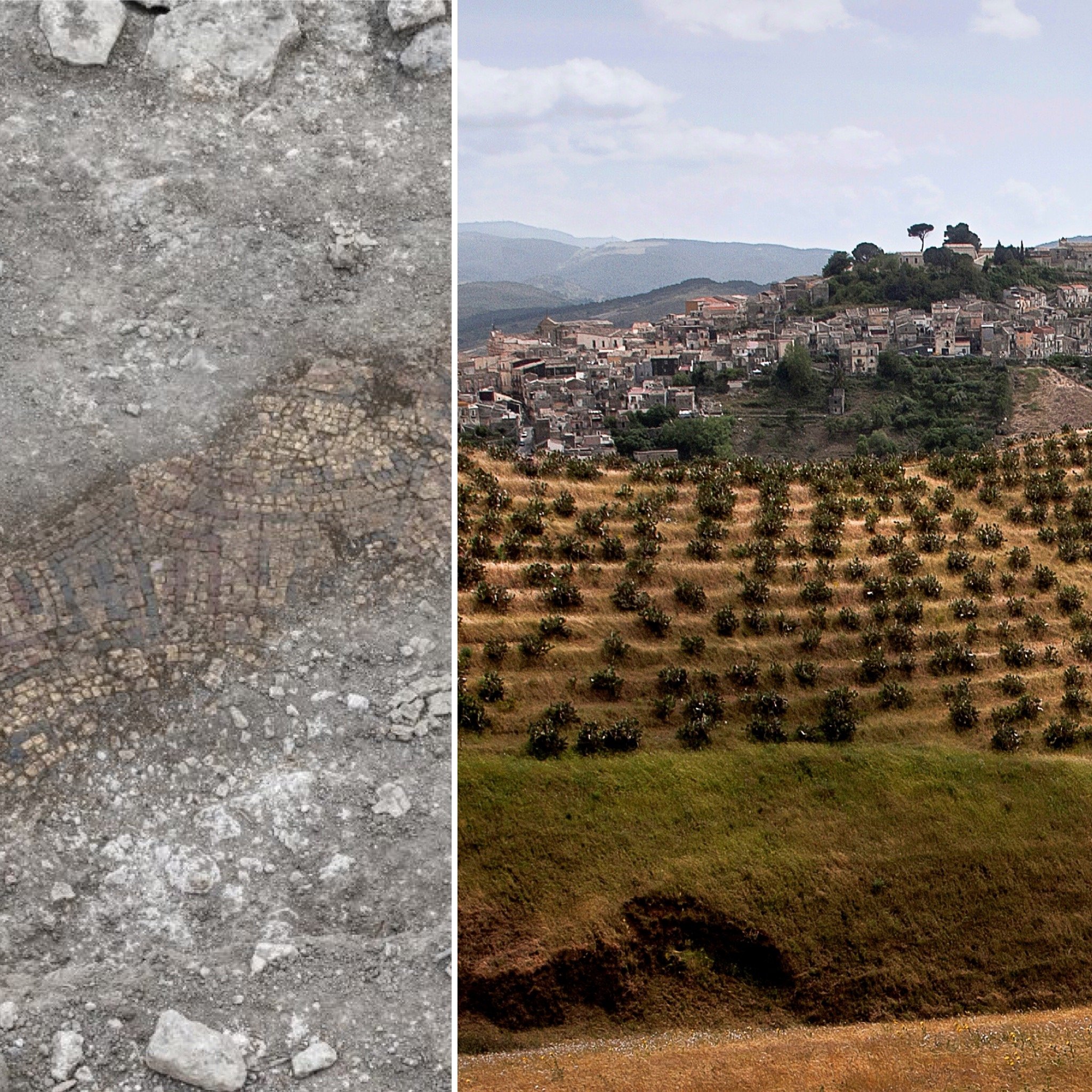
While not nearly as popular with tourists as Mount Etna, Palermo, or any of Sicily’s other picturesque seaside towns, Vizzini has a lot to offer. Inhabited since the late Bronze Age, it’s located on the slopes of Monte Lauro, a 986-meter-tall mountain that’s part of a series of extinct volcanoes. It is also the birthplace of Giovanni Verga, a beloved Italian author and playwright.
Last but not least, Vizzini is home to several archeological excavations. Researchers from the University of Göttingen in Germany have been digging around the area for over 20 years. Earlier this month, they stumbled upon the remains of a Roman house with a mosaic floor that appears to have been built sometime between the 2nd and 4th century C.E.
Göttingen excavations in Sicily in the province of Catania near the town of Vizzini. Photo: Johannes Bergemann.
Sicilians have born witness to numerous archeological discoveries over the years, and for good reason, as their island played an important role in ancient history. Originally inhabited by aboriginal tribes known as the Elymians, Sicanians, and Sicels, Sicily was first colonized by the Greeks before becoming a part of the Roman Republic in 241 B.C.E. The island changed hands numerous times during the Punic Wars between Rome and Carthage, a North African naval power.
In a way, the discovery of this aforementioned Roman house began in 2022, when Göttingen’s archeologists carried out geomagnetic surveys to identify sites and structures buried around Vizzini without having to dig them up first. The house itself measures 30 by 13 meters, or 98 by 42 feet, with a large, 328-square-foot room inside. A large portion of the floor is covered in mosaics, as was common for architecture of that time.
Remains of the mosaic floor at the Roman house in Vizzini, Sicily. Photo: Johannes Bergemann.
Unfortunately, parts of the mosaics were destroyed due to ploughing, according to the excavation’s lead archeologist, Johannes Bergemann.
“People lived there at a high level between the 2nd and around the 6th century [C.E.],” Bergemann explained in a press release published on the University of Göttingen’s website. “There were columns made of round bricks, covered with stucco and probably painted—similar to those in Pompeii.” His team also discovered the remains of fountains with marble basins, as well as pieces of Terra Sigillata, a type of high-end Roman ceramic.
The village this house was once part of appears to have covered an area of roughly 37 acres. Its development no doubt parallels that of other Sicilian settlements, with Greek residents gradually making place for Romans following the island’s annexation in the 3rd century B.C.E. Under Roman rule, Sicilian society was primarily agricultural, cultivating crops to feed the mainland Republic. The island was a pitstop for merchants traveling between continents, and is covered with roads that sped up transportation between settlements.
Göttingen’s archaeological team presented its findings at Vizzini’s town hall on October 16, 2024. Early next year, on February 3, 2025, Bergemann will deliver a lecture on their work on campus in Germany.